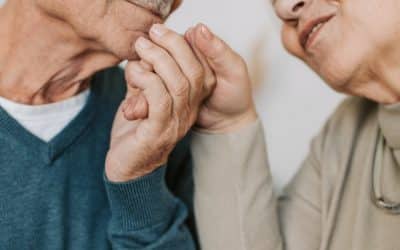Abstract: With the global warming, the incidence of heat stroke was significantly higher than before. Severe heat stroke has a high mortality, high morbidity and consolidated central nervous system injury characteristics. The main features of severe heat stroke...
Stroke
Hyperbaric Oxygen Therapy (HBOT) Research for Stroke
Massive Ischemic Stroke Due to Pulmonary Barotrauma and Cerebral Artery Air Embolism During Commercial Air Travel.
Abstract: BACKGROUND Air embolism into the systemic arterial circulation secondary to pulmonary barotrauma has rarely been reported. Herein, we report the clinical course of an extremely rare presentation of cerebral air embolism likely due to ruptured pulmonary...
CDC Grand Rounds: Public Health Strategies to Prevent and Treat Strokes
Abstract Worldwide, stroke is the second leading cause of death and a leading cause of serious long-term disability. In the United States, nearly 800,000 strokes occur each year; thus stroke is the fifth leading cause of death overall and the fourth leading cause of...
Co-administration of tissue plasminogen activator and hyperbaric oxygen in ischemic stroke: a continued promise for neuroprotection.
Abstract: Intravenous recombinant tissue-type plasminogen activator (r-tPA, alteplase) remains the recommended therapy for acute ischemic stroke. However, several factors are limiting its practical use. It makes it urgent for us to search more efficient strategies...
Hyperbaric oxygen for experimental intracerebral haemorrhage: Systematic review and stratified meta-analysis.
Abstract: Hyperbaric oxygen (HBO) is widely used in treating various neurological diseases. However, HBO for treatment of intracerebral haemorrhage (ICH) remains controversial, in either animal or clinical studies. Therefore, we conducted this systematic review and...
Hyperbaric oxygenation and 20-hydroxyeicosatetreanoic acid inhibition reduce stroke volume in female diabetic Sprague-Dawley rats.
Abstract: What is the central question of this study? Is there a beneficial effect and what are the mechanisms of acute and multiple hyperbaric oxygenation (HBO2 ) exposures on the outcome of cerebral tissue injury induced by a transient middle cerebral artery...
Hyperbaric Oxygen Therapy Can Induce Angiogenesis and Regeneration of Nerve Fibers in Traumatic Brain Injury Patients.
Background: Recent clinical studies in stroke and traumatic brain injury (TBI) victims suffering chronic neurological injury present evidence that hyperbaric oxygen therapy (HBOT) can induce neuroplasticity. Objective: To assess the neurotherapeutic effect of HBOT on prolonged post-concussion syndrome (PPCS) due to TBI, using brain microstructure imaging. Methods: Fifteen patients afflicted with PPCS were treated with 60 daily HBOT sessions. Imaging evaluation was performed using Dynamic Susceptibility Contrast-Enhanced (DSC) and Diffusion Tensor Imaging (DTI) MR sequences. Cognitive evaluation was performed by an objective computerized battery (NeuroTrax). Results: HBOT was initiated 6 months to 27 years (10.3 ± 3.2 years) from injury. After HBOT, DTI analysis showed significantly increased fractional anisotropy values and decreased mean diffusivity in both white and gray matter structures. In addition, the cerebral blood flow and volume were increased significantly. Clinically, HBOT induced significant improvement in the memory, executive functions, information processing speed and global cognitive scores. Conclusions: The mechanisms by which HBOT induces brain neuroplasticity can be demonstrated by highly sensitive MRI techniques of DSC and DTI. HBOT can induce cerebral angiogenesis and improve both white and gray microstructures indicating regeneration of nerve fibers. The micro structural changes correlate with the neurocognitive improvements.
Efficacy of N-Butylphthalide and Hyperbaric Oxygen Therapy on Cognitive Dysfunction in Patients with Delayed Encephalopathy After Acute Carbon Monoxide Poisoning.
Abstract: BACKGROUND Delayed encephalopathy after acute carbon monoxide (CO) poisoning (DEACMP) is one of the most serious complications after CO poisoning. This study was conducted to explore the efficacy of the combined application of N-Butylphthalide and hyperbaric...
Combined application of dexamethasone and hyperbaric oxygen therapy yields better efficacy for patients with delayed encephalopathy after acute carbon monoxide poisoning.
Abstract: Delayed encephalopathy after acute carbon monoxide (CO) poisoning (DEACMP) commonly occurs after recovering from acute CO poisoning. This study was performed to assess the efficacy of the combined application of dexamethasone and hyperbaric oxygen (HBO)...

